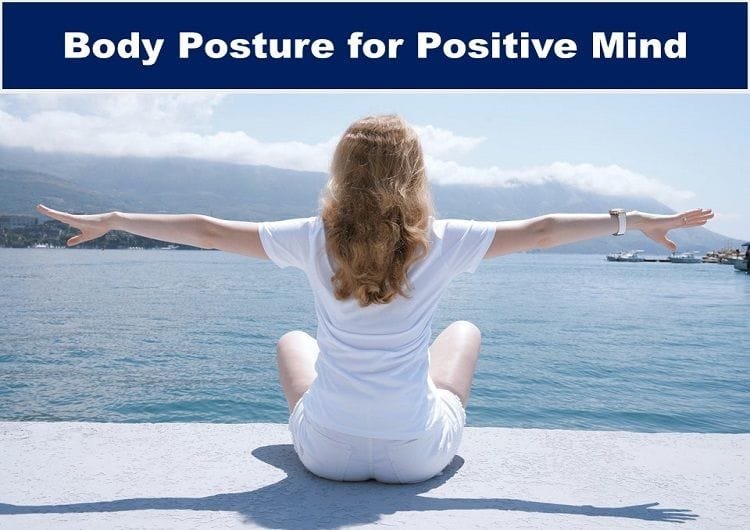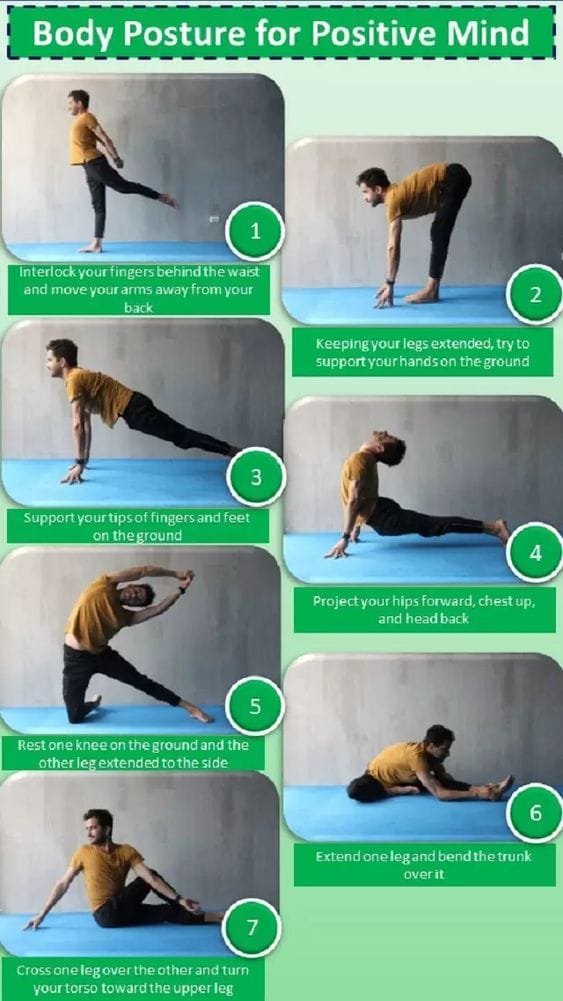All about Good Body Posture for Positive Mind and Positive Thinking.
Body Posture for Positive Mind
Our body is our main communication tool. We hear frequently about non-verbal communication. We constantly analyze the use of our gestures to avoid misunderstandings and simultaneously interpret others through their bodily gestures.
Although the body is capable of communicating even without us noticing those around us. It also expresses moods, interests, and attitudes. Our postures and gestures not only communicate with other people, but the number one audience of our body is ourselves.
Our non-verbal behavior influences how we think about ourselves and our self-esteem.
Sometimes if we are nervous or sad, we hide our chest and lower our shoulders. Many times, in new environments, where we feel threatened or insecure, we shrink and hardly get out of this position.
But equally this bad posture can cause us a state of insecurity and sadness. Many times, in this same situation, it is difficult to overcome the challenge because we are not able to change our body language.
The truth is that going the other way can influence our mood. A good posture, with a straight chest and shoulders back, can improve our attitude to a more assertive, confident, comfortable, and confident.
The study has shown that the production in our body of two elemental hormones, testosterone and cortisol, are related and are influenced by the positions and body language that we assume.
Testosterone is the hallmark hormone for strength, security, and dominance, while cortisol is a hormone released in stressful and sad situations. Proper posture, with well-positioned shoulders and an upright chest, contributes to increased testosterone production, while poor posture encourages the release of cortisol doses.

The work of a positive posture begins with small changes and over time it is permanently established in our behavior. Something as simple as standing in an upright position for two minutes already improves your mood and makes you stronger and more confident in the face of any situation and the people around you.
It is true that maintaining positions of power and strength is difficult at the beginning since the muscles do not tend to maintain positions like this for long periods of time, but regular practice strengthens our muscles, causing our body to adopt good posture instinctively.
Remember that constant good posture in our bodies allows us to achieve more positive minds. In the same way, a positive mind is capable of generating assertive behaviors and therefore, better results in our day-to-day life.
Keep your spine extended for positive self-esteem
Here we leave you a sequence that will help you strengthen the muscles that surround the spine and with that, you can improve your posture and, consequently, your mood.
1. Interlock your fingers behind the waist and move your arms away from your back as much as you can, projecting your chest forward and bringing your shoulders back.
As you move your arms away from your back, raise one leg back and stay for a few moments trying to maintain the position as firm and stable as you can. Compensate, doing everything to the same side.
With that you will not only strengthen the leg that serves as your base, you will also be strengthening the muscles of the back and improving your concentration.
2. Keeping your legs extended, try to support your hands on the ground, without dropping your head. In fact, try to lower yourself trying to project your chest out, and keep your gaze straight ahead.
3. Support your hands – or better yet: the tips of your fingers – and feet on the ground and try to keep your whole body well extended. This position will help you to strengthen a large number of the muscles that help support the extended spine. The abdominal muscles, for example, are one of the most favored.
4. From the previous position, project your hips forward, chest up, and head back. Try – carefully – to flex the entire spine backward, making the entire back muscles contract and strengthen. As you do the pose, see that your heels stay together and your glutes are contracted.
5. Rest one knee on the ground and the other leg extended to the side. As you breathe in, raise your arms, and on the exhale flex your spine to the side of the leg that is extended. Stay for a few moments allowing the intercostal muscles to relax and the obliques and abdomen to be strengthened. Compensate by doing the same to both sides.
6. Sitting on the floor, extend one leg and bend the trunk over it. Allow the back muscles to relax and try to engage the abdominal muscles. Aim to lower from the hips, so that the chest and abdomen are closer to the leg before the head. Perform for both sides.
7. Cross one leg over the other and turn your torso toward the upper leg. With the opposite arm, leverage the leg to help you rotate your torso more. Support your backhand in a way that helps you keep your spine especially extended. It compensates.

YOU MAY ALSO LIKE
Surprising Health Benefits of Giloy (Tinospora cordifolia)

